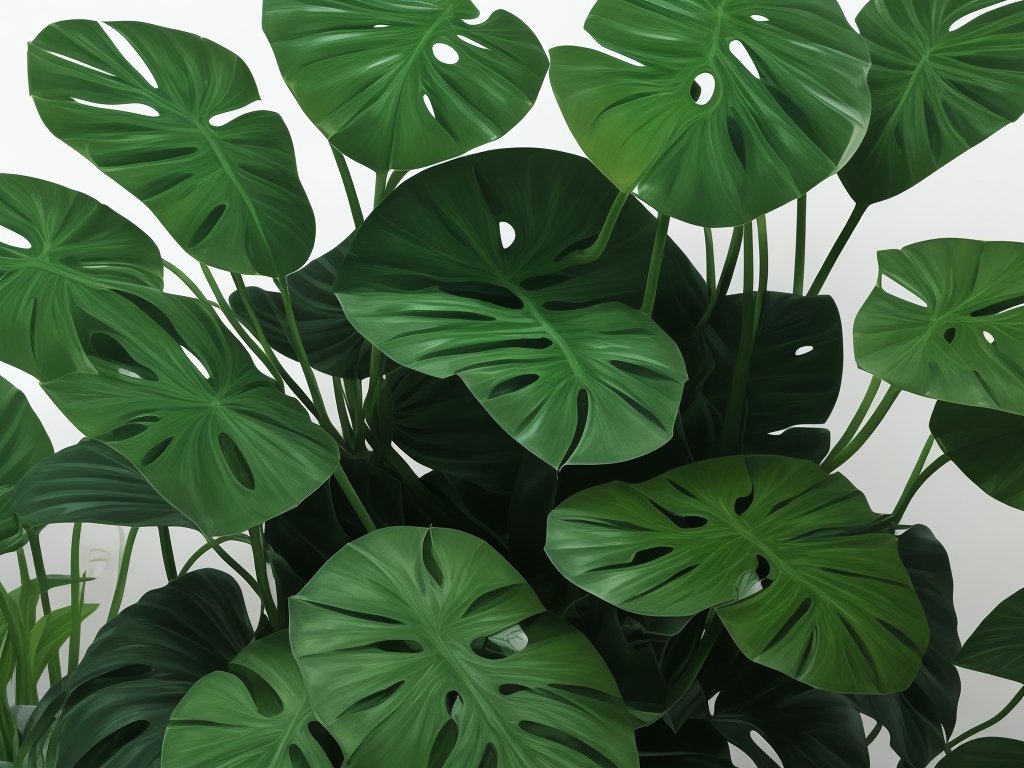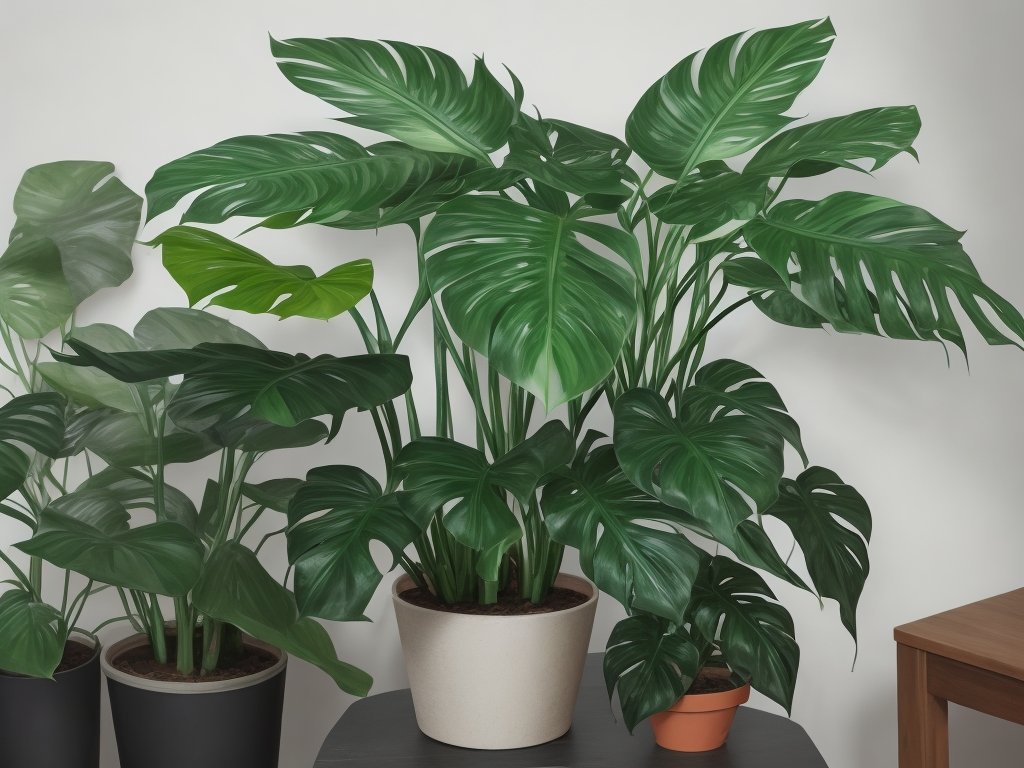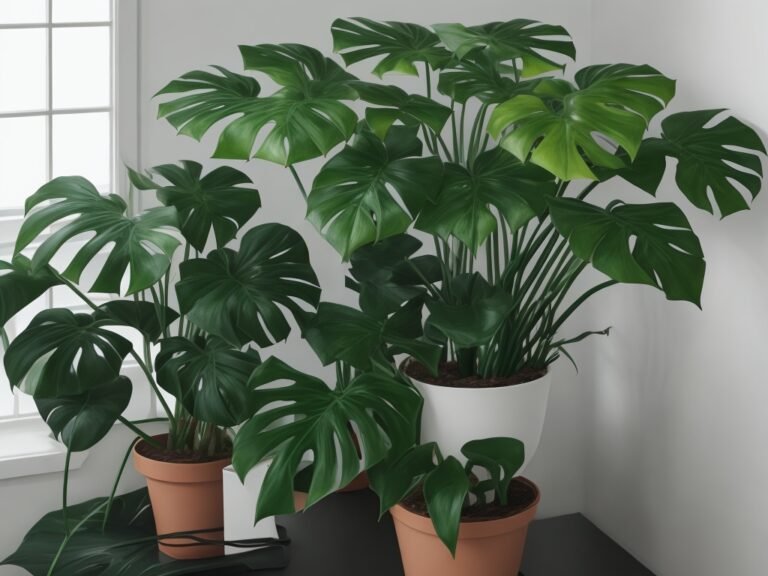How To Encourage a Monstera Plant To Climb (Add Moss Pole)?
Key Takeaways:
- Adding a moss pole to your Monstera plant will encourage it to climb and grow taller.
- Moss poles mimic the natural environment of Monstera plants, providing support and stability for their aerial roots.
- Secure the moss pole firmly in the pot, allowing the plant to attach itself and grow upwards.
- Regularly misting the moss pole helps maintain humidity and encourages root growth for a healthy climbing Monstera.
Do you want to take your Monstera plant to new heights? If so, you’re in luck! In this article, I’ll be sharing some fantastic tips on how to encourage your Monstera plant to climb by adding a moss pole.
Monstera plants are natural climbers, and providing them with the support they need not only enhances their aesthetic appeal but also promotes their overall health and well-being.
We’ll explore different methods for supporting these plants, with a special focus on moss poles, their advantages, and how to choose the right one for your Monstera. So, if you’re ready to level up your plant game, let’s dive in!
| Techniques | Description |
|---|---|
| 1. Moss pole | A pole covered in sphagnum moss that provides support and encourages the Monstera plant to climb by mimicking its natural habitat. |
| 2. Securing the plant | Secure the Monstera plant to the moss pole by gently tying its aerial roots to the pole using soft plant ties or twist ties. |
| 3. Adding moisture | To keep the moss pole moist, water it regularly or mist it to create a humid environment for the Monstera plant. |
| 4. Regular pruning | Regularly prune the Monstera plant to encourage new growth and direct it towards the moss pole. Trim any excessive growth that doesn’t align with the desired climbing direction. |
| 5. Patience and guidance | Be patient as the Monstera plant may take some time to attach itself to the moss pole. Provide guidance by gently training its vines towards the pole using soft plant ties or twist ties. |
Why Monstera plants need support for climbing
Monstera plants need support for climbing to thrive and reach their full potential.
It helps them mimic their natural environment and promotes healthy growth.
Understanding the nature of Monstera plants
Monstera plants, also known as Swiss cheese plants, are tropical vines that naturally grow in rainforests. They have large, glossy green leaves with unique splits and holes.
Monstera plants are climbers by nature and use aerial roots to attach themselves to trees for support.
They thrive in bright, indirect light and require regular watering to keep the soil moist. Understanding their climbing nature is important for providing the right support and care.
The benefits of encouraging Monstera plants to climb
Encouraging Monstera plants to climb offers several benefits.
Firstly, climbing allows the plant to reach upward, mimicking its natural growth pattern in the wild.
This can result in a more aesthetically pleasing appearance, as the plant develops more leaves and foliage.
Secondly, climbing also helps to create a compact and fuller plant, making it a great option for small spaces.
Moreover, by providing support for climbing, you can prevent the plant from sprawling and taking up too much horizontal space.
Finally, climbing stimulates the development of aerial roots, which not only enhances the plant’s stability but also improves its ability to take in water and nutrients.
So, encouraging your Monstera plant to climb can lead to a healthier, more vibrant, and visually appealing plant.
Different methods for supporting Monstera plants
There are various methods you can use to support your Monstera plants as they climb, including moss poles, trellises, stakes, and wall-mounted supports.
Using moss poles for Monstera climbing
Moss poles are a popular and effective method for supporting Monstera plants as they climb.
They provide stability and encourage the growth of aerial roots, which the Monstera can use to anchor itself.
Moss poles also mimic the natural environment of the plant, fostering a healthier and happier growth.
Plus, they add a touch of beauty to your indoor space.

What is a moss pole?
A moss pole is a support structure used for climbing plants like Monstera.
It’s a long pole covered in sphagnum moss, which helps the plant attach its aerial roots and climb upwards.
The moss pole provides stability and encourages vertical growth, allowing the plant to reach its full potential.

Advantages of moss poles for Monstera plants
Moss poles provide sturdy support for Monstera plants to climb and grow vertically.
They mimic the natural environment where Monstera plants thrive, allowing them to develop larger and more mature leaves.
Additionally, moss poles encourage aerial root growth, which helps the plant absorb more nutrients and promotes overall plant health.

Other alternatives to moss poles for Monstera climbing
If you don’t want to use a moss pole for your Monstera plant to climb, there are other alternatives you can try.
Trellises and stakes are popular options.
They provide support and allow the plant to grow upwards.
Another option is wall-mounted supports, which can be attached to a wall or other vertical surface.
These alternatives can help your Monstera climb and thrive.
Trellises and stakes
Trellises and stakes are alternative methods for supporting Monstera plants to climb.
Trellises are frameworks with horizontal bars for plants to climb on, while stakes are vertical supports.
They provide stability and structure for the plant as it grows upward.
Wall-mounted supports
Wall-mounted supports are a great alternative to moss poles for encouraging Monstera plants to climb. They can be attached to walls or other vertical surfaces, providing a sturdy framework for the plant to cling to.
Just make sure to install the support securely and adjust it as the plant grows.

Choosing the right moss pole for your Monstera
To choose the right moss pole for your Monstera, consider factors like height, stability, and the material of the pole.
Understanding the needs of your Monstera plant
Understanding the needs of your Monstera plant is essential for its health and growth. Monstera plants require bright but indirect light, preferably near a window.
They thrive in temperatures between 65-85°F (18-29°C) and prefer higher humidity levels.
It’s important to water them when the top inch of soil feels dry and provide well-draining soil. Regular fertilization during the growing season can also help promote healthy growth.
Factors to consider when selecting a moss pole
When selecting a moss pole for your Monstera, there are a few important factors to consider.
First, think about the height and size of your plant.
You’ll want a moss pole that is tall enough to accommodate its growth.
Second, consider the material of the moss pole.
Coco coir and sphagnum moss are popular choices.
Finally, think about the stability and durability of the moss pole.
Make sure it is sturdy enough to support your plant as it climbs.
Popular types of moss poles for Monstera plants
Popular types of moss poles for Monstera plants include coir poles, sphagnum moss poles, and DIY moss poles made from bamboo or PVC pipe.
These poles provide a stable structure for the Monstera to climb and attach its aerial roots to.
They also help retain moisture and provide support for the plant as it grows upward.
Preparing the Monstera plant for climbing
Before adding support, make sure your Monstera plant is healthy and mature enough to climb.
Ensuring the plant is ready for support
To ensure your Monstera plant is ready for support, start by pruning and training it. Remove any dead or damaged leaves, and trim any long or unruly stems.
This will help create a more compact and manageable plant.
Additionally, make sure the plant is healthy and well-nourished before adding support. Finally, choose the right time to add the support, when the plant is actively growing and ready to climb.
Pruning and training the Monstera plant
Pruning and training the Monstera plant is essential for promoting healthy growth and encouraging climbing.
Remove any dead or damaged leaves to maintain the plant’s appearance.
As the plant grows, guide its vines to climb by attaching them to a moss pole or other support.
Regular pruning and training will help your Monstera thrive and achieve its full climbing potential.
Timing for adding support
The ideal time to add support for your Monstera plant is when it starts showing signs of climbing.
Look for new growth and aerial roots, indicating that it’s ready to climb.
Avoid waiting too long, as the plant can become tangled or bent without proper support.
Steps to add a moss pole for Monstera climbing
To add a moss pole for Monstera climbing, gather the necessary materials and carefully install the pole.
Afterwards, secure the Monstera plant to the moss pole for support and growth.
Gather the necessary materials
To gather the necessary materials for supporting your Monstera plant, you’ll need a few key items.
First, you’ll need a moss pole, which is a popular choice for climbers.
You may also consider trellises, stakes, or wall-mounted supports as alternatives.
Additionally, make sure you have pruning shears for trimming and training the plant, as well as any necessary ties or clips for securing it to the support.
Lastly, gather any other tools or equipment you may need, such as a watering can or misting bottle.
Carefully installing the moss pole
To carefully install a moss pole for your Monstera plant, start by selecting a sturdy pole that is tall enough to support its growth.
Next, position the pole near the base of the plant and gently press it into the soil, making sure it is stable.
You can use plant ties or twine to secure the Monstera to the pole as it grows.
Take care not to damage the roots or stems during the installation process.
Proper installation will encourage the Monstera to climb and thrive.
Securing the Monstera plant to the moss pole
To secure your Monstera plant to the moss pole, start by gently tying the vines to the pole using soft plant ties or twine.
Avoid tying the vines too tightly to allow for growth.
As the plant grows, regularly check and adjust the ties to ensure they’re still secure.
Make sure not to damage the stems or leaves while securing the plant.
Caring for Monstera plants after adding a moss pole
After adding a moss pole, ensure you water the Monstera plant regularly, provide adequate light and temperature, and perform regular maintenance and monitoring.
Watering and humidity requirements
Water your Monstera plant thoroughly, allowing the top inch of soil to dry out between waterings.
Aim to maintain consistent moisture without overwatering.
Mist the leaves regularly or place the plant near a humidifier to provide the humidity Monstera plants love.
Avoid placing it in direct sunlight or in areas with low humidity.
Providing adequate light and temperature
Providing adequate light and temperature is essential for the health and growth of your Monstera plant. Aim to place your plant in bright, indirect light for at least six hours a day.
Avoid direct sunlight, as it can scorch the leaves.
Additionally, maintain a temperature range of 65-85°F (18-29°C) to ensure optimal growth.
Regular maintenance and monitoring
Regular maintenance and monitoring are essential for the health and growth of your Monstera plant. Here are some key tasks to keep in mind:
- Watering: Monitor the moisture level of the soil and water your Monstera plant when the top inch of soil feels dry. Avoid overwatering, as it can lead to root rot.
- Humidity: Monstera plants prefer humid environments. Consider misting the leaves or placing a humidifier nearby to maintain the ideal humidity level.
- Light: Provide your Monstera plant with bright, indirect sunlight. Avoid placing it in direct sunlight, as it can cause sunburn.
- Temperature: Monstera plants thrive in temperatures between 65-85°F (18-29°C. Avoid exposing them to extreme cold or heat.
- Fertilization: Feed your Monstera plant with a balanced houseplant fertilizer every 2-4 weeks during the growing season (spring and summer. Follow the package instructions for the correct dosage.
- Pruning: Regularly inspect your Monstera plant for any dead or yellowing leaves. Prune them off to promote healthier growth.
- Monitor for pests: Keep an eye out for common pests like spider mites and mealybugs. If you notice any signs of infestation, treat them promptly with an appropriate insecticide.
Troubleshooting common issues with Monstera climbing
Having troubles with your Monstera climbing? Let’s troubleshoot common issues together.
Yellowing leaves and plant stress
Yellowing leaves in Monstera plants can be a sign of stress. Causes include overwatering, underwatering, low humidity, and inadequate lighting.
To address the issue, adjust watering frequency, ensure proper humidity levels, provide sufficient light, and avoid extreme temperatures.
Regularly check for pests and diseases.
Pests and diseases
Pests and diseases can affect Monstera plants. Common pests include spider mites, mealybugs, and aphids.
To prevent and treat infestations, regularly inspect your plant for signs of pests and use organic insecticidal soap or neem oil.
Diseases like root rot can occur due to overwatering, so make sure to water your plant properly and provide good drainage. Rotate your plant occasionally to ensure all sides receive enough light and air circulation.
Adjusting support as the Monstera grows
As your Monstera plant grows, you’ll need to adjust its support to accommodate its increasing size and weight.
This may involve raising or extending the moss pole or adding additional stakes or trellises.
Regularly check the plant’s growth and make necessary adjustments to ensure it has adequate support to climb and thrive.
Frequently Asked Questions
Can any Monstera plant climb?
Yes, any Monstera plant has the natural ability to climb. Climbing is a characteristic feature of Monstera plants, thanks to their aerial roots and strong vining abilities.
However, providing proper support such as a moss pole or trellis will encourage healthy and controlled growth.
Can I use other types of supports instead of moss poles?
Yes, you can use other types of supports instead of moss poles for your Monstera plant. Some alternatives include trellises, stakes, and wall-mounted supports.
These options provide stability for the plant to climb and can be chosen based on your personal preferences and space availability.
How often should I water my Monstera plant after adding a moss pole?
After adding a moss pole, water your Monstera plant approximately once a week.
However, it’s important to adjust the frequency based on factors like environmental conditions, pot size, and plant growth.
Always check the moisture level of the soil before watering to prevent overwatering or underwatering.
Should I trim or remove any aerial roots once the Monstera starts climbing?
Once the Monstera starts climbing, you should avoid trimming or removing its aerial roots.
These roots help the plant attach itself to its support and absorb moisture and nutrients from the air.
By leaving them intact, you are allowing the plant to thrive and grow healthy.
Final Verdict
Encouraging a Monstera plant to climb by adding a moss pole is a beneficial and rewarding practice. By understanding the nature of Monstera plants and the benefits of climbing, we can provide the necessary support for their growth and development.
Moss poles are an excellent choice for this purpose, providing stability, structure, and a natural environment for the plant to thrive.
Choosing the right moss pole, preparing the plant, and properly installing and securing the pole are crucial steps in the process. Additionally, caring for the Monstera plant after adding the moss pole and troubleshooting any issues that arise are essential for its overall health.
By following these steps and providing the necessary care, you can enjoy a beautiful and thriving Monstera plant in your home.







